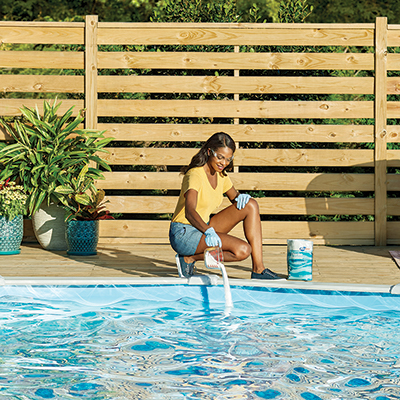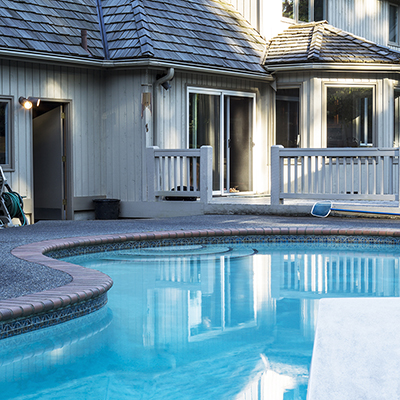How to Shock a Pool

Last updated September 7, 2023
Whether you’re a new swimming pool owner or a seasoned one, you may be wondering how to shock a pool. Your first question might even be, “What is pool shock?” Shocking your pool on a regular basis is a simple way to prevent stray algae and bacteria in your water. It also keeps your pool smelling clean.
This guide will show you how to shock a pool and why it’s important. You’ll also find out more about the types of pool shock and when to shock a pool.
Difficulty:
Beginner
Duration:
Under 2 hours
Table of Contents
What is a Pool Shock?
Types of Chlorine
How to Shock the Pool
Types of Pool Shock
Shocking Saltwater Pools
How Often to Shock Your Pool
What is a Pool Shock?
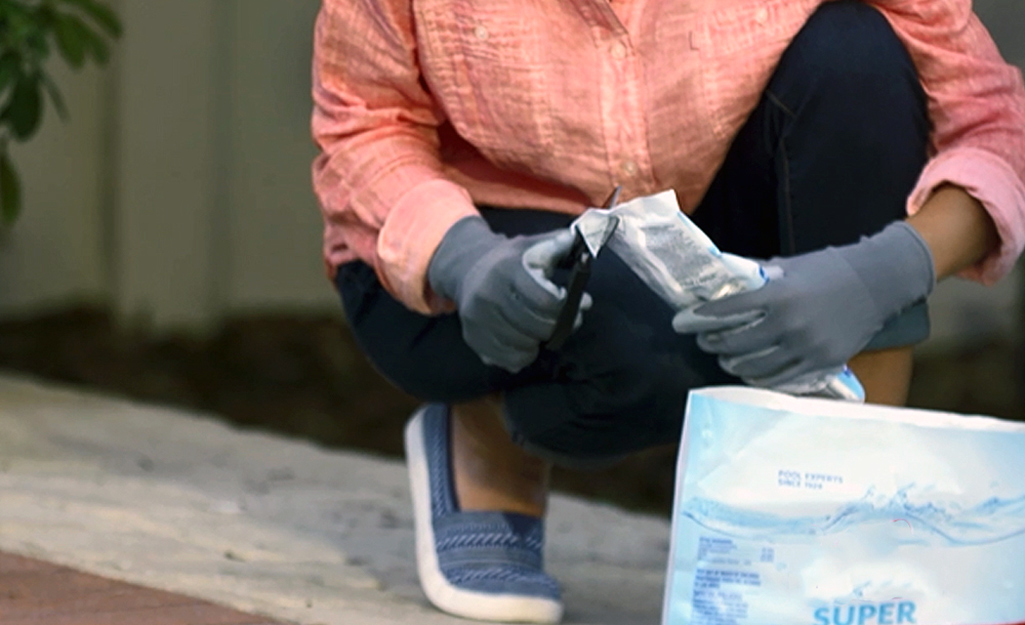
So, what is pool shock, exactly? "Shocking” refers to the process of adding chlorine or non-chlorine pool chemicals to the water in order to raise the "free chlorine” level. The goal is to raise this level to a point where contaminants such as algae, chloramines and bacteria are destroyed.
A pool that smells strongly of pool chlorine doesn't mean that it's clean. In fact, a clean pool will be almost odor-free. Strong chlorine smell is a sign of improperly treated water. The odor actually comes from chloramines, also known as combined chlorine. Chloramines form when the chlorine in the pool mixes with the nitrogen in sweat, oils and urine. However, smell alone does not dictate when you should shock your pool.
In general, you should shock your pool when:
- Algae begins to grow in your pool.
- The free chlorine level of your pool measures zero.
- The chloramines or combined chlorine level rises above 0.5 parts per million (ppm).
Types of Chlorine
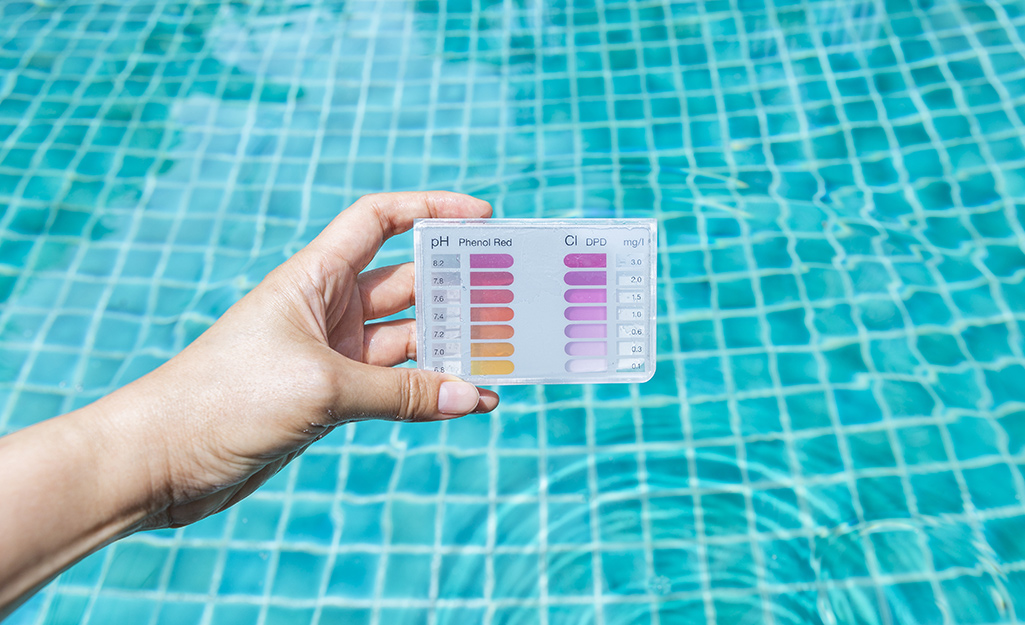
As you learn how to shock a pool, it's vital to understand the difference between the types of chlorine.
- Free Chlorine (FC): The amount of chlorine actively disinfecting the water. Proper free chlorine levels are between 1 and 3 ppm.
- Combined Chlorine (CC): The chlorine that’s been used. It will still be in the water but has a lower sanitizing power. Keep the CC level to less than 0.2 ppm.
- Total Chlorine (TC) is the sum of FC and CC in your pool.
- Breakpoint Chlorination: When there's enough FC to shatter the molecular bonds of chloramine. Once breakpoint chlorination has been reached, the free chlorine in your pool water can begin to build up. Free chlorine does the heavy lifting when it comes to sanitizing a pool.
How to Shock the Pool
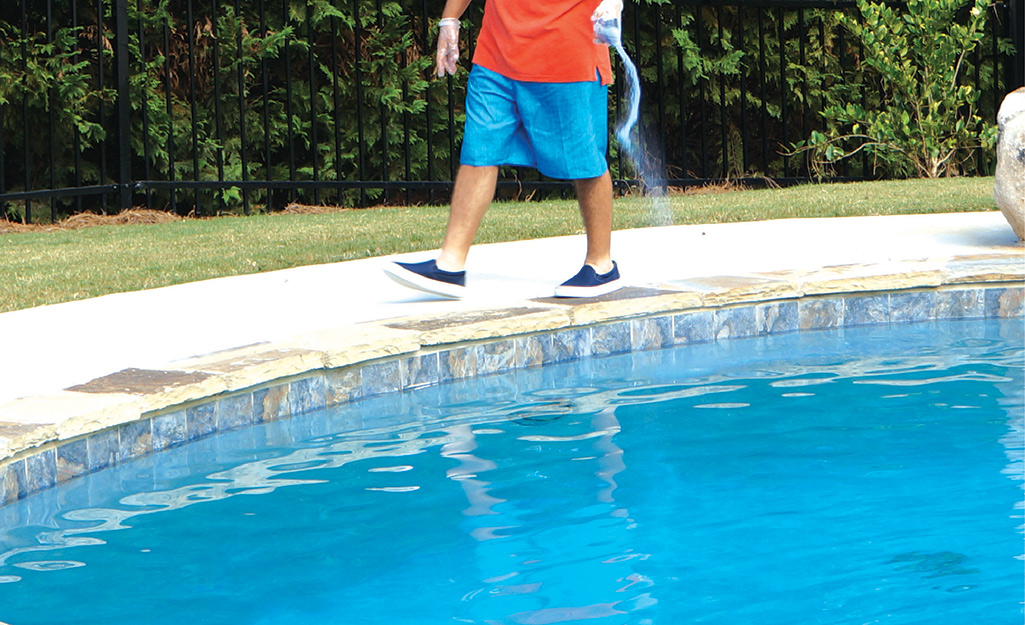
When you’re shocking a pool,
the goal is to raise the free chlorine level of the pool water to roughly 10 times the combined chlorine level. Reaching this mark is the breakpoint chlorination.
Shocking a pool should be done at dusk. The sun will burn off unstabilized chlorine. Shocking your pool at night makes sure the chemicals work properly.
Here's how to shock a pool:
- Test the water. You will need to check the pH level in your pool. Pool test kits can measure the FC and TC of your water. To find the CC of your pool, subtract the FC from the TC. This will let you know how much chlorine you need to add to the pool.
- Calculate the amount of shock you will need to mix. Refer to the amount indicated on the package of the shock chemical you plan to use.
- You can add some granular pool shock to your swimming pool directly, but most varieties need to be mixed with water before use. Mix the granular pool shock with water ahead of time, if necessary. This will save you time and help prevent calculation mistakes. Pre-mix the pool shock in a five-gallon bucket.
- Liquid pool shock is also available.
- Ensure the pool pump is running.
- Pour the mixture into the water, around the edges of the pool.
- Let the pump run for about six hours or more.
- Test the water to ensure proper chlorine levels.
- Don’t use the pool right away. Wait for the free chlorine levels to drop to 1 to 3 ppm.
- Wear gloves and safety glasses while working with pool chemicals.
Tip: You need to reach breakpoint chlorination every time you shock your pool. Not hitting the breakpoint can result in even more chloramines in your pool.
Types of Pool Shock
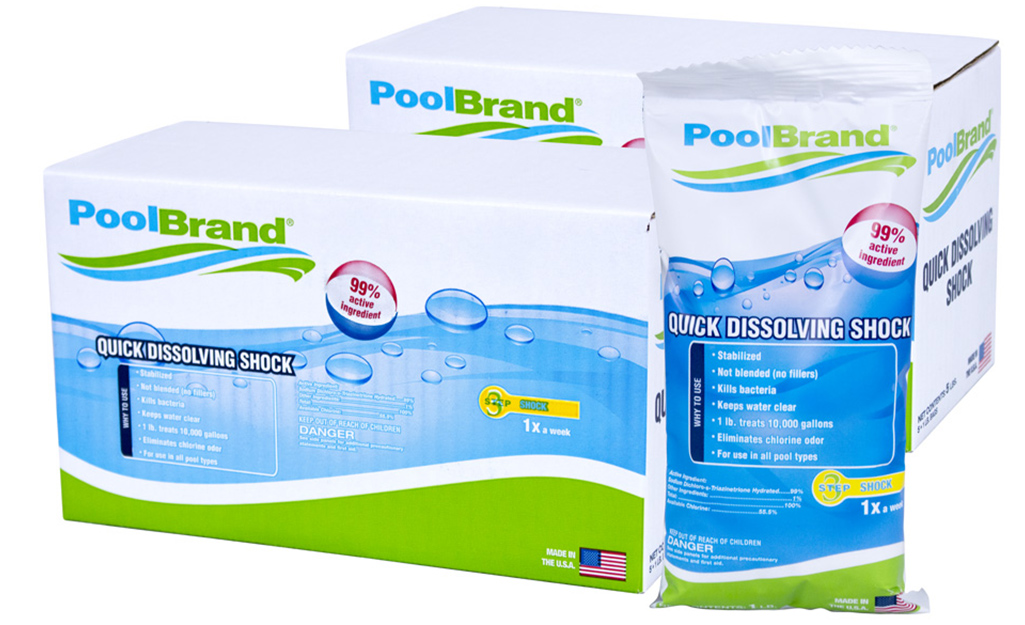
There are several types of products you can use to shock the pool. Typically, you will not use regular chlorine tablets as pool shock chlorine.
Calcium Hypochlorite: Also referred to as cal hypo, this chemical is one of the least costly and most convenient ways to shock your pool. It's usually sold in granular form.
- Needs to be dissolved before you add it to the pool.
- Must be used after dusk.
- Allow eight hours to pass after shocking before you can safely swim.
- Adds about 0.8 ppm of calcium to your water for every ppm of FC added.
Lithium Hypochlorite: Unlike cal hypo, this chemical doesn't raise the calcium level of your pool water. This option can be more costly.
- Dissolves much more quickly.
- Can be added to the pool directly without dissolving it beforehand.
- Commercial versions contain 35 percent chlorine.
- Must be used after dusk.
- Allow eight hours to pass after shocking before you can safely swim.
- Toxic to aquatic life.
Dichlor: Short for sodium dichloro-s-triazinetrione or dichloroisocyanuric acid. This chemical is the safest and easiest to use.
- Contains between 50 percent and 60 percent chlorine.
- Can be used for both regular chlorine doses and shock treatments.
- Doesn’t have to be dissolved ahead of time.
- Adds 0.9 ppm of cyanuric acid for every ppm of additional FC.
- Must be used after dusk.
- Allow eight hours to pass after shocking before you can safely swim.
Potassium peroxymonosulfate: A less costly, non-chlorine shock.
- Add it directly to your pool water at any time.
- Takes roughly 15 minutes to work before you can safely swim.
- Does not function as an algaecide.
Shocking Saltwater Pools
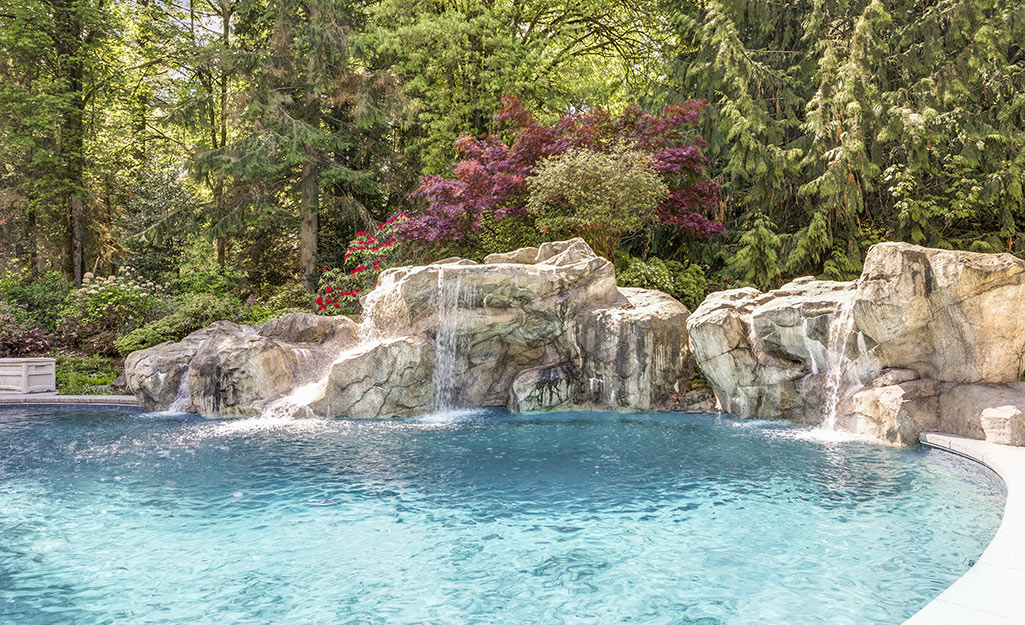
Saltwater pools need to be shocked, too. Saltwater pools use regular table salt to create chlorine, by passing the slightly salty water over two electrically charged plates. How often you need to shock a saltwater pool is no different from when to shock other chlorine pools.
To shock a saltwater pool, follow the basic steps for shocking a chlorine pool. Granular pool shock, such as calcium hypochlorite, can also be used in a saltwater pool.
How Often to Shock Your Pool

How will you know when to shock a pool? Don’t wait for a bad smell or eye irritation before you shock your pool. It's recommended that you should do a pool shock once a week. The more you use the pool, the more often you need to shock it.
Occasionally, you may need to perform an extra pool shock after:
- Heavy pool use, like a pool party.
- A severe rainstorm.
- Major water level change.
- There has been poop in the pool.
Knowing how to shock a pool is insurance against algae, bacteria and other contaminants in your pool water. Shocking a pool regularly will keep its water fresh and clear.
When it’s time to shock your pool, have all the supplies on hand. The Home Depot delivers online orders when and where you need them.
